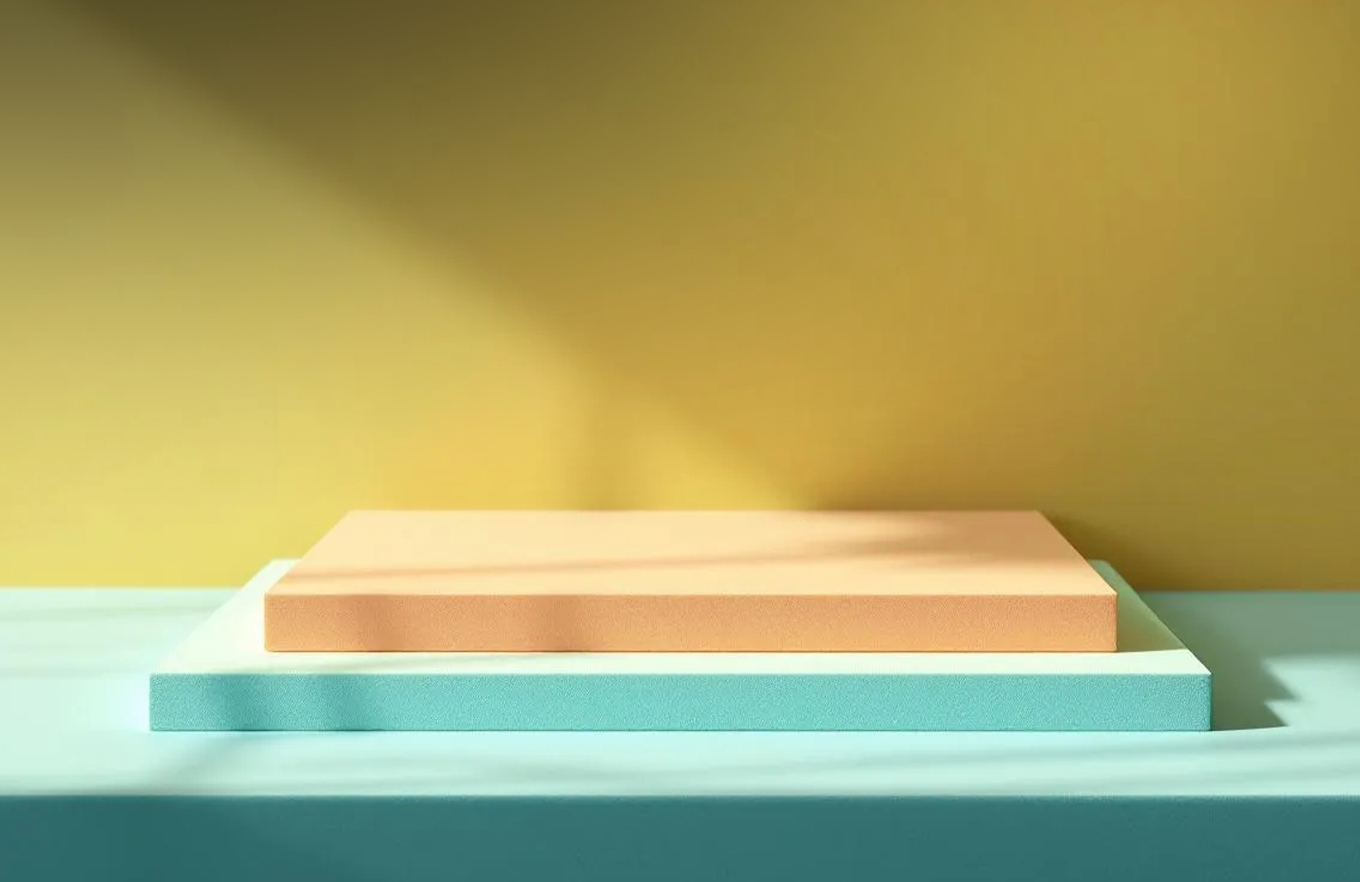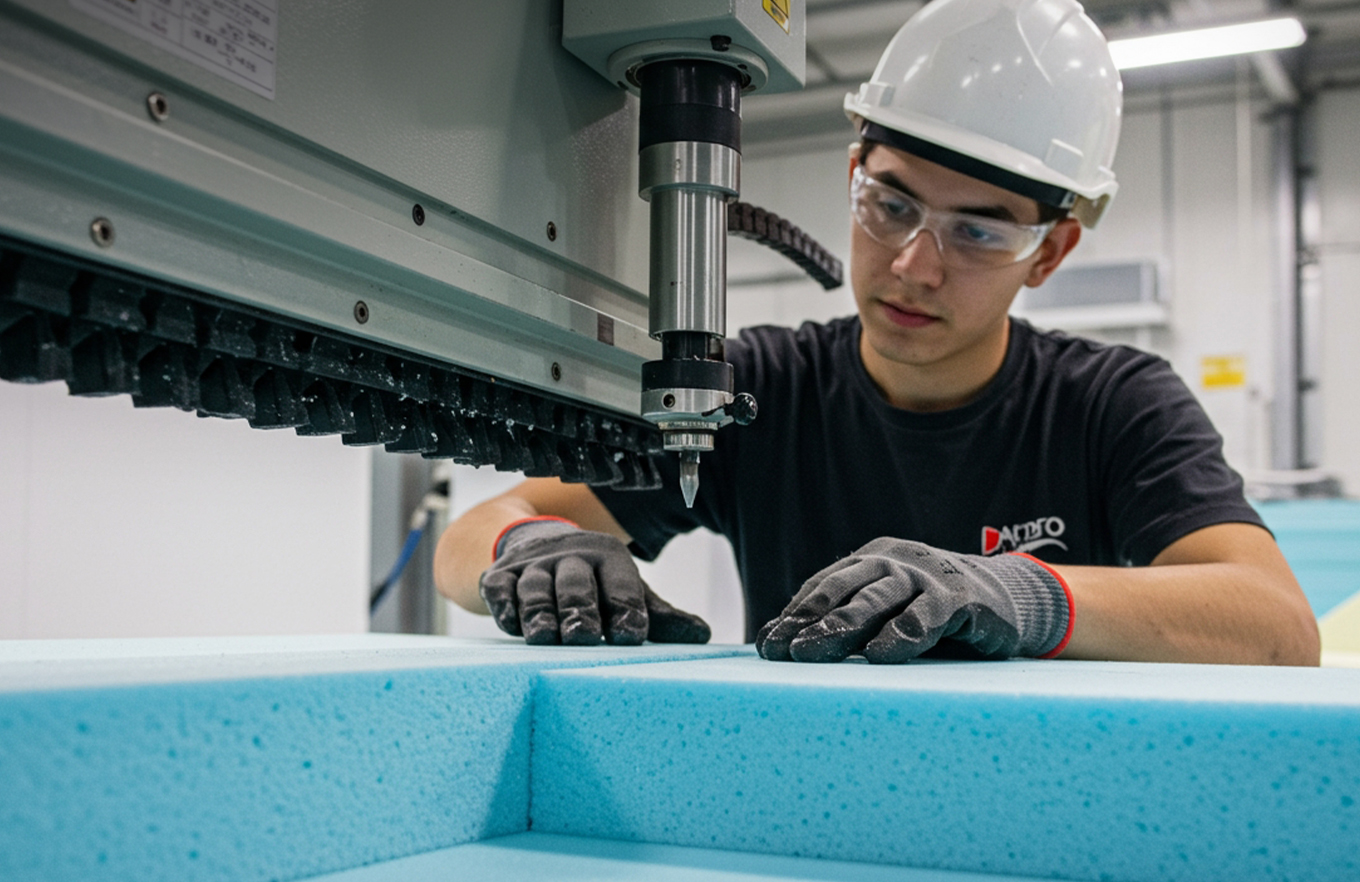
As industries across the world move toward sustainability, EVA Foam has become a standout material redefining modern manufacturing. Known for its durability, flexibility, and eco-friendliness, EVA Foam supports the global shift toward cleaner production processes. In recent years, manufacturers from packaging to footwear have discovered that EVA Foam isn’t just efficient, it’s also kind to the planet.
EVA Foam plays a key role in replacing less sustainable options like PVC or rubber. Its adaptability also extends to producing EVA Mats, which are widely used in gyms, playgrounds, and home flooring setups.
This evolution of EVA Foam has been driven by manufacturers like Samad Foam, who integrate quality, innovation, and environmental consciousness in every layer of production.

EVA Foam is composed of ethylene and vinyl acetate, which together create a lightweight, non-toxic, and recyclable material. Unlike traditional foams that release harmful chemicals during production or decomposition, EVA Foam maintains a low environmental footprint. It doesn’t emit chlorine-based toxins or hazardous gases, making it safer for both workers and the environment.
Manufacturers worldwide are shifting to EVA Foam because it allows for energy-efficient production while maintaining structural strength and shock absorption. Samad Foam, one of the prominent EVA Foam suppliers in the USA, uses advanced techniques that minimize energy waste and maximize material utilization. This makes EVA Foam not just a performance material, but a sustainable one.

Another major environmental advantage of EVA Foam is its recyclability. Unlike many industrial plastics, EVA Foam can be reprocessed and reused for various applications, including the creation of EVA Mats. This recyclability helps reduce landfill waste and encourages a circular economy approach in manufacturing.
EVA Foam waste from production lines can be shredded and remolded into new products without losing its essential properties. In Europe, many industries are adopting policies that encourage material reuse, and EVA Foam fits perfectly into this framework. Its long lifespan also means less frequent replacement, reducing overall material demand.
Switching to EVA Foam significantly reduces the carbon footprint associated with manufacturing. The material’s lightweight nature means less energy is required for transportation and handling, lowering greenhouse gas emissions across supply chains. EVA Foam’s high insulation properties also contribute to energy efficiency, as it minimizes temperature fluctuations in packaging and construction applications.
Samad Foam plays an active role in promoting green manufacturing practices by producing high-quality EVA Foam that meets environmental compliance standards. By integrating eco-friendly manufacturing methods, they help industries meet sustainability goals while maintaining product performance.
Durability is often overlooked when discussing environmental advantages, yet it’s one of EVA Foam’s strongest assets. Its resilience and long service life mean products like EVA Mats and footwear components last longer, resulting in less frequent replacements and reduced waste generation.
For example, EVA Foam maintains its cushioning ability and structure even under repeated pressure. This long-lasting nature directly contributes to sustainability by extending the lifecycle of end products and conserving resources that would otherwise be spent on replacements.

Traditional foam materials often require harsh chemicals or produce byproducts harmful to the environment. EVA Foam, however, is produced through a cleaner process that eliminates most volatile organic compounds (VOCs). This means safer working conditions for manufacturers and cleaner air quality during production.
Samad Foam ensures compliance with international safety and environmental standards while manufacturing EVA Foam for various industries, from sports and packaging to healthcare. Their production approach minimizes waste, reduces energy usage, and promotes responsible chemical handling, aligning perfectly with modern sustainability standards.
One of the most interesting aspects of EVA Foam is how it supports innovation in eco-friendly product design. Designers and engineers appreciate EVA Foam for its versatility; it can be molded into various shapes without losing structural integrity. This allows companies to develop sustainable solutions without sacrificing performance.
EVA Mats, for instance, are now a staple in gyms, yoga studios, and homes. Their production relies heavily on EVA Foam’s shock-absorbing nature and recyclability. By choosing EVA-based products, consumers actively support environmentally conscious manufacturing while enjoying comfort and safety in everyday use.
As industries continue to focus on sustainability, the demand for EVA Foam will keep rising. From packaging and footwear to automotive and healthcare sectors, EVA Foam’s lightweight, durable, and recyclable properties make it the ideal material for the next generation of green manufacturing.
Samad Foam, with its expanding operations and global partnerships, including regions like Europe, continues to pioneer eco-conscious foam solutions. Their efforts to produce high-quality EVA Foam not only meet the needs of manufacturers but also contribute to a cleaner, greener planet.
Looking for sustainable and high-quality EVA Foam solutions? Contact Samad Foam today to discover eco-friendly EVA Mats and manufacturing materials designed for performance and sustainability.
EVA Foam stands at the intersection of innovation and sustainability. Its non-toxic composition, recyclability, and durability make it a responsible choice for modern manufacturing. From its use in EVA Mats to packaging and beyond, EVA Foam supports global industries in reducing their environmental impact without compromising quality. Companies like Samad Foam continue to lead the charge in developing environmentally conscious products that meet the growing demand for sustainable materials worldwide.
Yes, EVA Foam is more eco-friendly because it’s non-toxic, recyclable, and produces fewer emissions during manufacturing.
EVA Mats are made by molding EVA Foam sheets into desired thicknesses and textures to ensure durability and comfort.
Absolutely. EVA Foam can be reprocessed into new products without significant degradation, promoting a circular economy.
Samad Foam’s EVA Foam is produced with advanced technology, ensuring consistent quality, environmental compliance, and global export standards.
Manufacturers in the USA prefer EVA Foam for its lightweight, durable, and sustainable properties that enhance efficiency and reduce waste.
EVA Foam’s flexibility and reusability make it perfect for sustainable designs, from packaging to EVA Mats and sports equipment.